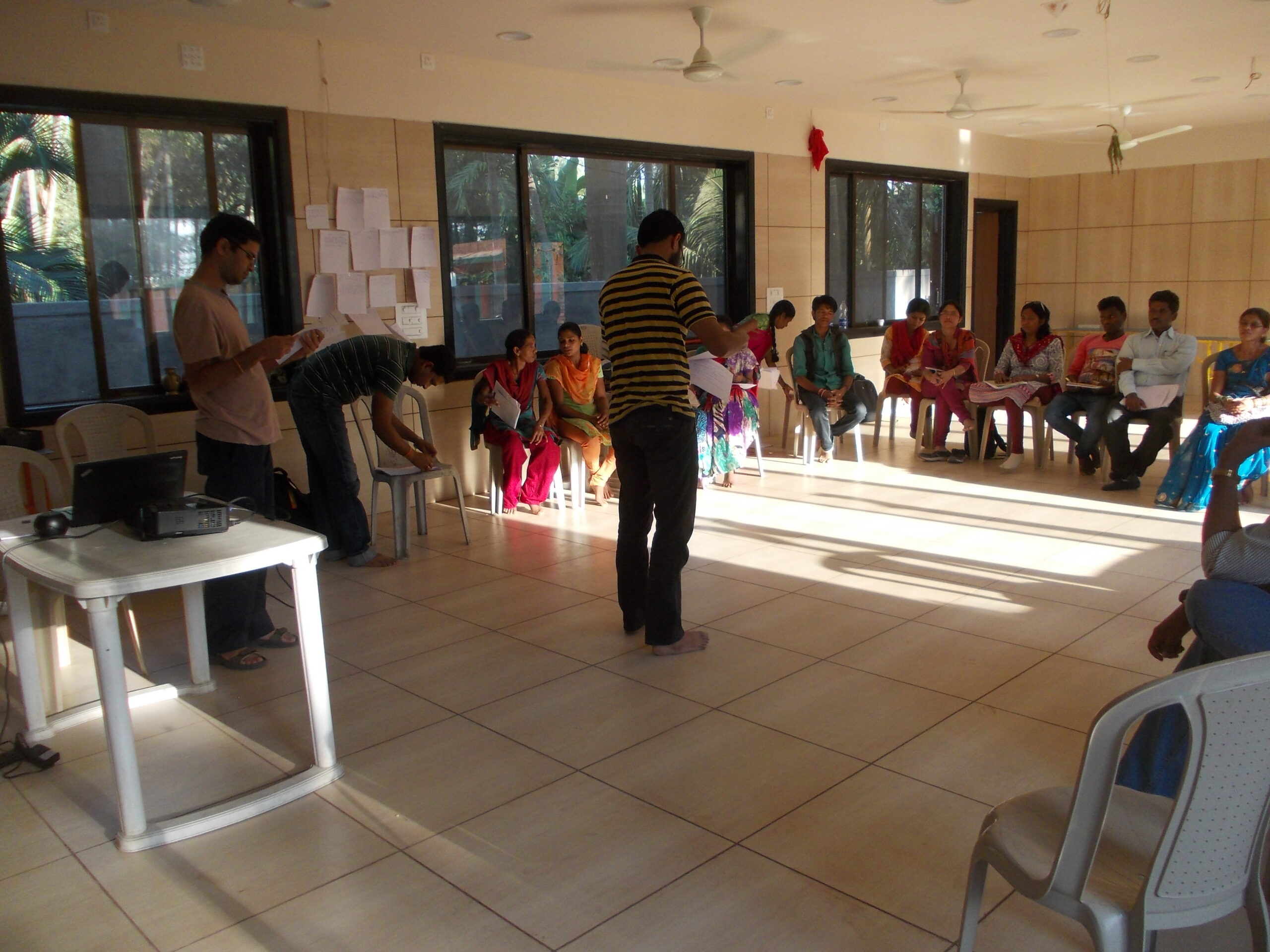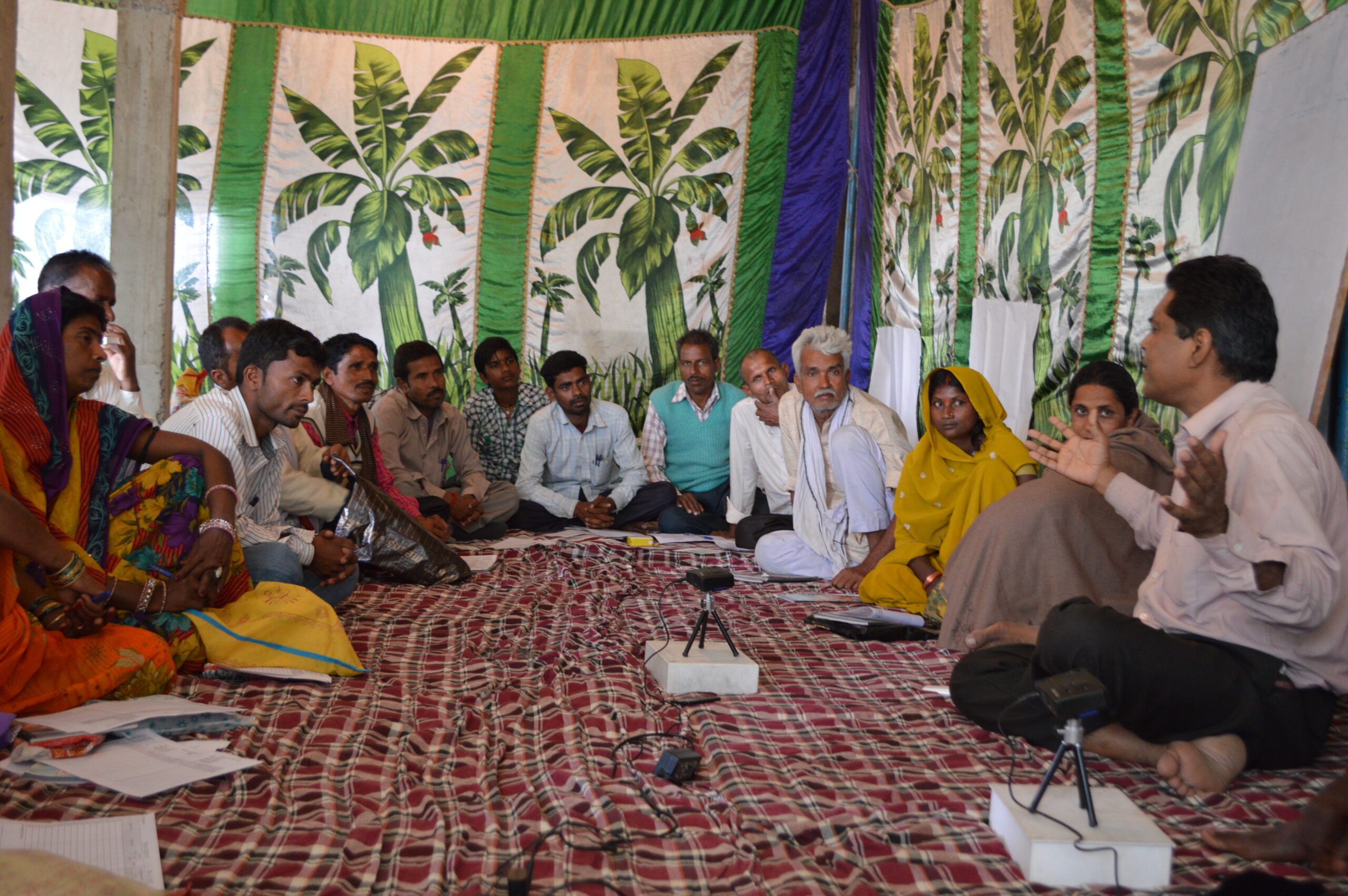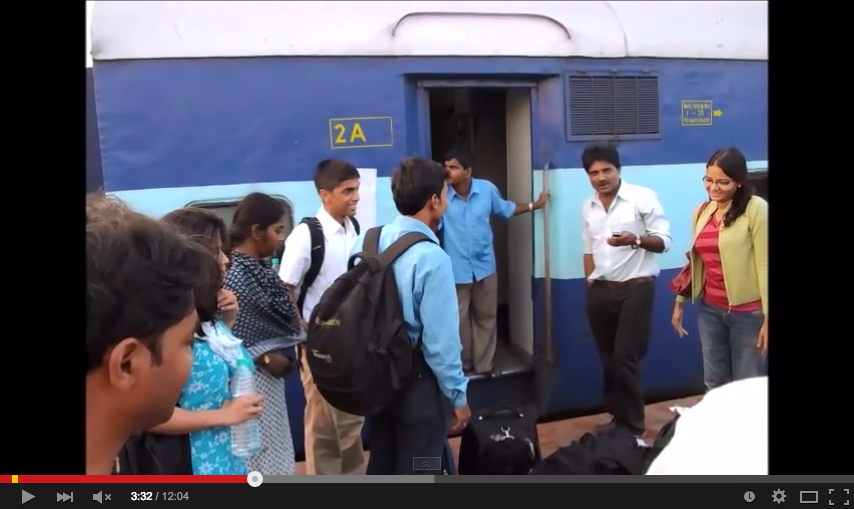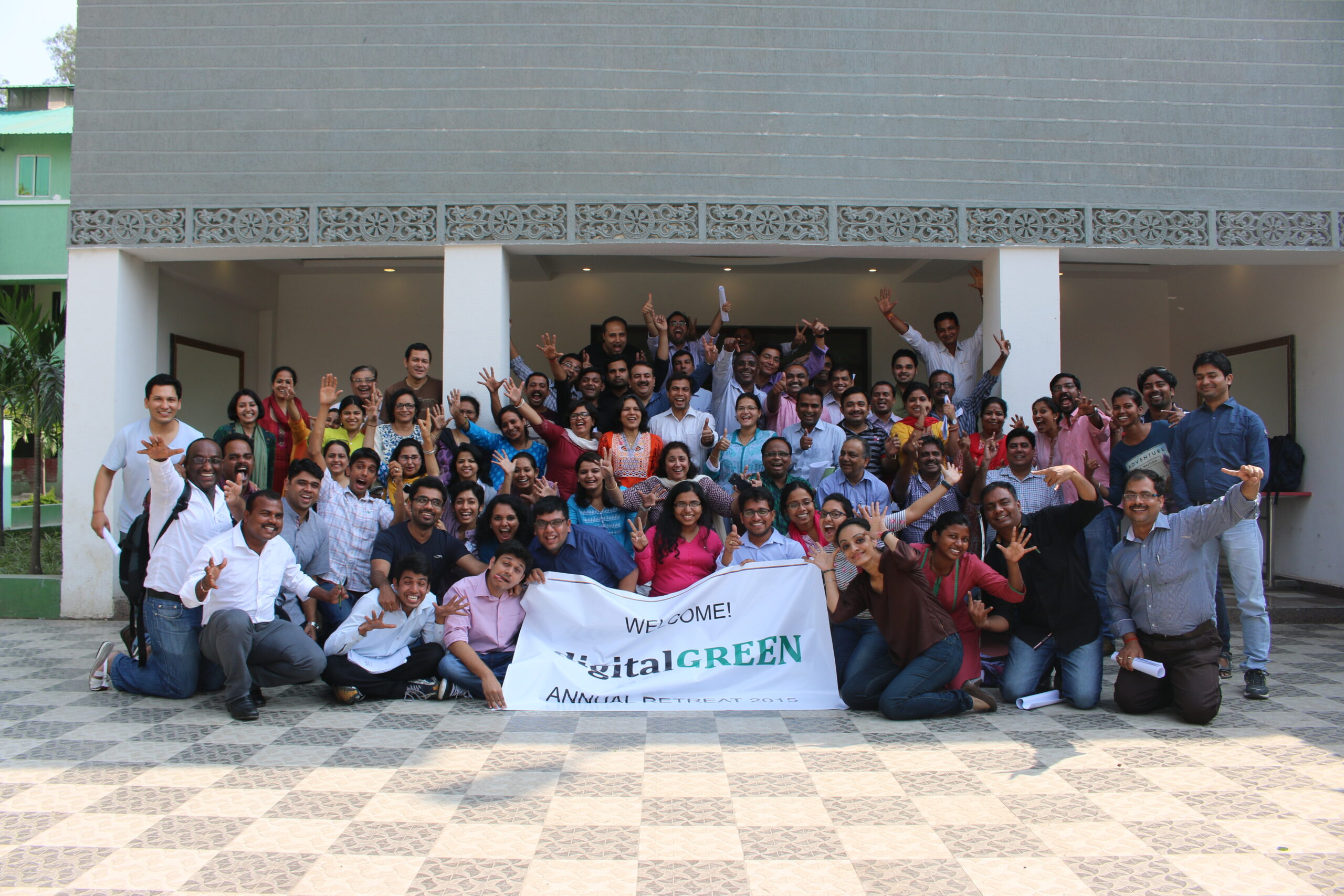Contributed by Tanmay Goel, Assistant Software Engineer, Digital Green
—
Village resource persons (VRPs) are the key actors in Digital Green’s video-enabled learning approach that focuses on providing farmers the right information at the right time. At Digital Green, we constantly strive to provide these frontline workers effective, timely and supportive supervision.
A big opportunity that we could recently tap in to involved the reach of mobile phones in rural India. We observed that most VRPs had at least one mobile phone in the family, if not a personal one. Also, given the geographical expanse that each of our Program Managers have to increasingly manage, we felt that an Interactive Voice Response (IVR) system could be used to pass messages between the Program Managers of Digital Green and VRPs. The advantage of the system was that extension workers could receive important messages directly from the Managers, like schedule of block meetings etc., rather than through the organisational hierarchy. The system also made it possible for VRPs to share crucial information or any issues back with the Managers at no extra cost.
We collaborated with Awaaz.De to conduct a pilot in Samastipur and Nalanda districts of Bihar from November 2014 – February 2015 and 69 VRPs were registered on the system. Messages about upcoming meetings and currently-relevant seasonal videos were broadcasted to all VRPs in a block. We also ran a contest to encourage listeners to interact more with the system.
A few statistics from the pilot:
- 58 VRPs listened to at least one of the messages.
- On 89% of calls, listeners heard the entire message.
- A total of 87 messages were recorded on the system by VRPs and responded to by our Program Managers.
- 50 of these were valid.
- 26 out of 58 listeners attempted to leave a message.
- 34% listeners left at least one message that was not blank and contained a message other than hello.

One of the most fascinating outcomes of the pilot was the sheer number and variety of messages left by VRPs on the system. When VRPs became familiar with the system, they started using it to get their messages across to the program managers. Their messages included requests for relevant videos, invitations to shoot good adoptions and reports on adoption and screening progress in their villages. Some messages were really amusing; One VRP said, I want to see Satyamev Jayate episode on pico projector and another said, Happy new year to all! In this new year, when will have our first meeting. In fact, managers felt that a wider variety of issues were voiced via IVRS than in other public fora where CRPs were reluctant to stand out.
We observed that the IVR system was not very easy for VRPs to use. Some IVR prompts referred to Beep sound and Hash key that VRPs encountered for the very first time, and due to this recording messages was difficult and unintuitive. Yet, we were surprised by VRPs effort to learn the systems usage and, with a little bit of training, they used it avidly and actively.
Ultimately, the project was a great learning experience. We enjoyed listening to VRPs voices sitting in our office, and our Program Managers felt that IVR system reduced delay in resolution of issues and facilitated communication (group and one-on-one). In future, we will be designing structure research projects to measure the impact of such a system.













 Second half of this day focused on storytelling, where we asked people to go wild with their creativity. We mostly make videos on agriculture, health and nutrition practices, which sometimes gets monotonous and people find it hard to break the pattern and come up with different ideas for their videos. We wanted the participants to start thinking afresh to get out of their monotony. They went so wild with it that we ended with stories about pink baby dragons, politicians and toothache! There was much more on storytelling and narrative techniques the next day. The groups worked on their skills to develop interesting first person and third person narratives with proper beginning, middle and end sequences. Some used voice-overs to talk about road safety and others about benefits of yoga. All the videos generated much laughter (and I believe brought down the stress levels of the participants substantially!), but were also reviewed critically by the facilitators and other participants on technical and conceptual aspects.
Second half of this day focused on storytelling, where we asked people to go wild with their creativity. We mostly make videos on agriculture, health and nutrition practices, which sometimes gets monotonous and people find it hard to break the pattern and come up with different ideas for their videos. We wanted the participants to start thinking afresh to get out of their monotony. They went so wild with it that we ended with stories about pink baby dragons, politicians and toothache! There was much more on storytelling and narrative techniques the next day. The groups worked on their skills to develop interesting first person and third person narratives with proper beginning, middle and end sequences. Some used voice-overs to talk about road safety and others about benefits of yoga. All the videos generated much laughter (and I believe brought down the stress levels of the participants substantially!), but were also reviewed critically by the facilitators and other participants on technical and conceptual aspects..jpeg) On the last two days of the training, the participants were divided into groups of four, each group to develop a 8-10 minute story on a topic of their choice. The first day was for shooting and the second day was for editing. The day for the shoot began early in the morning at 6:30 AM. Groups came up with stories on female foeticide, gender inequity, foreign tourists in India and alcoholism. All the groups worked hard to make their video the best. While there was a lot of excitement to shoot their videos creatively, the participants were also particular about the technical quality, checking and re-checking their shots to ensure that sound has been recorded properly and the visuals look fine.
On the last two days of the training, the participants were divided into groups of four, each group to develop a 8-10 minute story on a topic of their choice. The first day was for shooting and the second day was for editing. The day for the shoot began early in the morning at 6:30 AM. Groups came up with stories on female foeticide, gender inequity, foreign tourists in India and alcoholism. All the groups worked hard to make their video the best. While there was a lot of excitement to shoot their videos creatively, the participants were also particular about the technical quality, checking and re-checking their shots to ensure that sound has been recorded properly and the visuals look fine.


